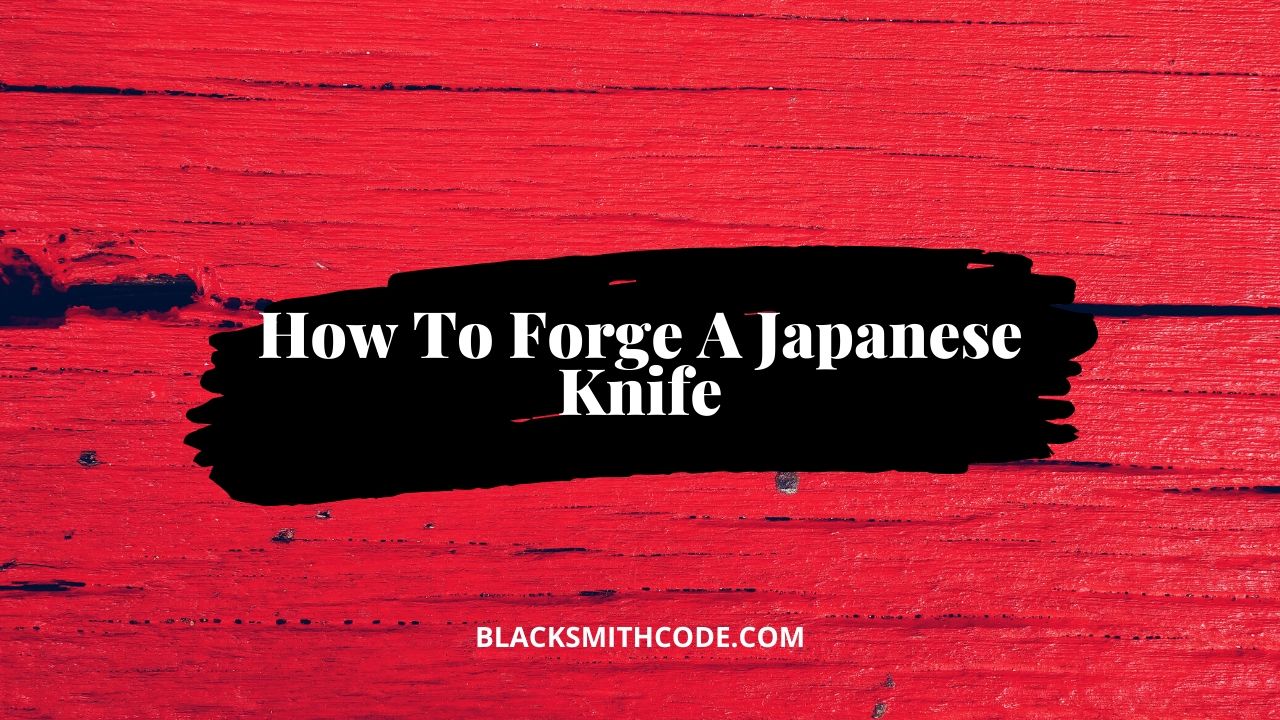Knife forging is a rather broad term while saying Japanese has helped narrow it down to specific knife design. Japanese knives has a unique type of blade that is created by forging then welding of a raw kind of steel to give a singly type known as tamahagane.
Forging a Japanese knife is not an entirely strange process; it involves just a slight modification to the blade making process that you are already familiar with in the past. You can make a Japanese knife with these simple processes;
Instructions:
Step 1: Get The Right Tools And Materials Needed
Just like most other blacksmithing projects, the first thing to do is to get your tools and materials ready. The tools required for forging a Japanese knife include forge, vise, hammer, tongs, hacksaw, anvil, file, and safety equipment. The needed material is a piece of non-deep hardening type of steel (w2, 1070, w1, 1095, and so on).
Step 2: Preparing And Cutting The Materials
This is one of the most straightforward parts of the entire process. Mark the steel according to the appropriate length and do ensure that the measure is about 70-80% short of your intended length. This reduction is because these materials can stretch during forging and the extent of stretching is dependent on how thick the material is. Thicker materials stretch more than thin ones.
Step 3: The Sunobe
this is the first part called the Nakago. This stage is when you start forming the blade by forging out sunobe. Here, the sunobe is just the procedure involved in creating all the basic drawing and tapers out in specific portions. Sunobe should be done on the blade and the tip region of the knife [Nagasa], as well as the tang portion [nakago].
Step 4: Sunobe 2
This part of forging a Japanese knife is called the Nagasa. The sunobe for this part for forming the basic shape of the tip [kissakki] while also developing the taper down the blade, you can start this process by placing the knife in a forge with the tip first. After this, withdraw the tip of the knife from fire, and then place the edge of the anvil and hammer out.
Step 5: Beveling The Nagasa
You have to set the face of the blade on the anvil to bevel the nagasa. At this stage, you have to select a side which will become the edge. Start from the tip and strike down to the edge of the knife. The tip of your knife will then start to curve naturally backward towards the spine. The thicker the material, the more the curve it will get.
Step 6: Beveling The Nagako
This is similar to the level 4 above for forging a Japanese knife. The beveling is needed to suit the Japanese style of blade. Strike the blade below the edge down to the handle part, and you can make it take your preferred shape. You must, however, ensure that the blade is entirely straight.
Step 7: Finish Up
At this point, the blade should have taken the final shape that you want. If not, you might have to revisit the steps 5 and 6 above. You can then be creative about the shaping and handle from this point using sander and files.
Conclusion
Forging knives is such a vast topic because there are different styles of knives to be forged. Forging a Japanese knife is one of those styles. Although the outward appearance makes people perceive the process to be difficult, going through the highlighted steps above will prove otherwise.

